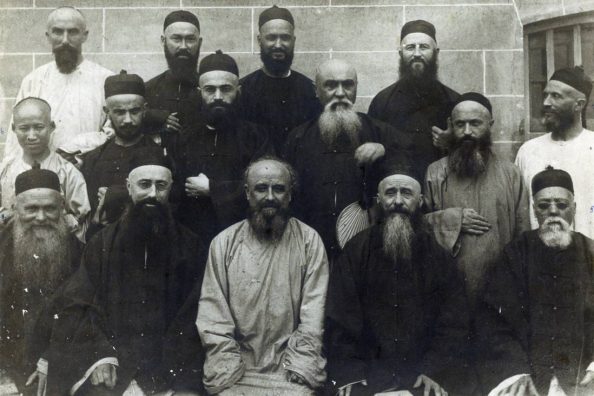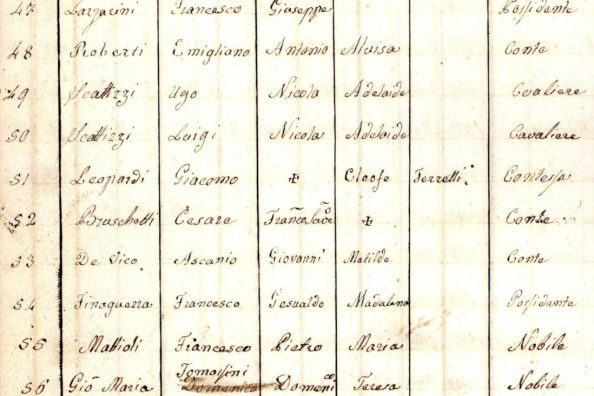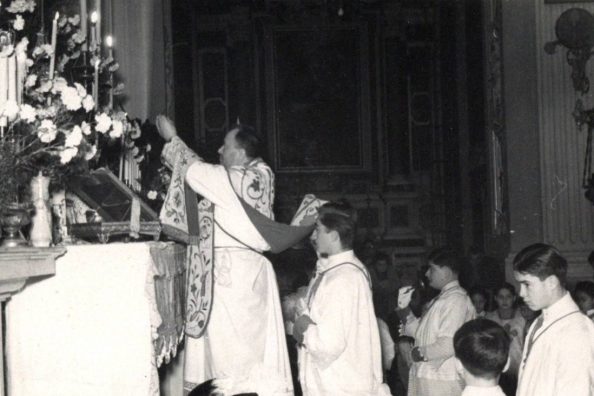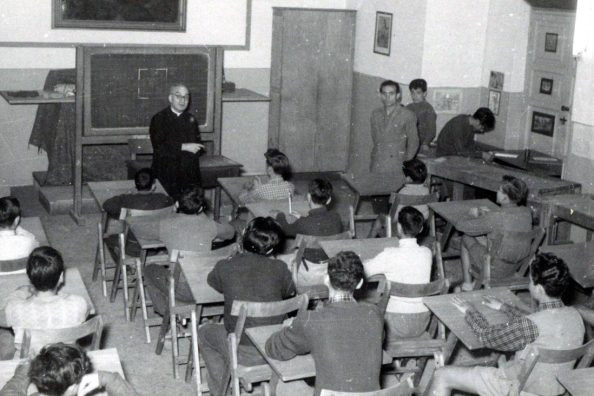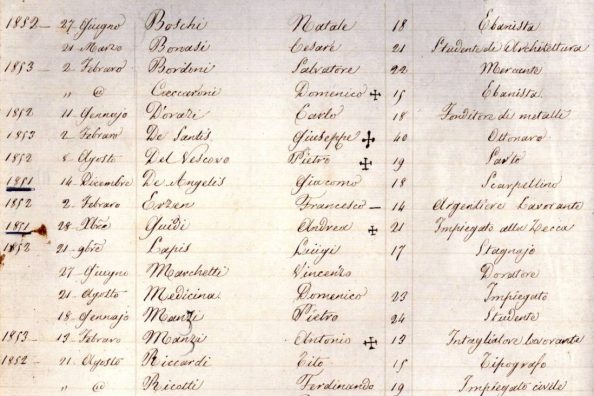Jesuit burials
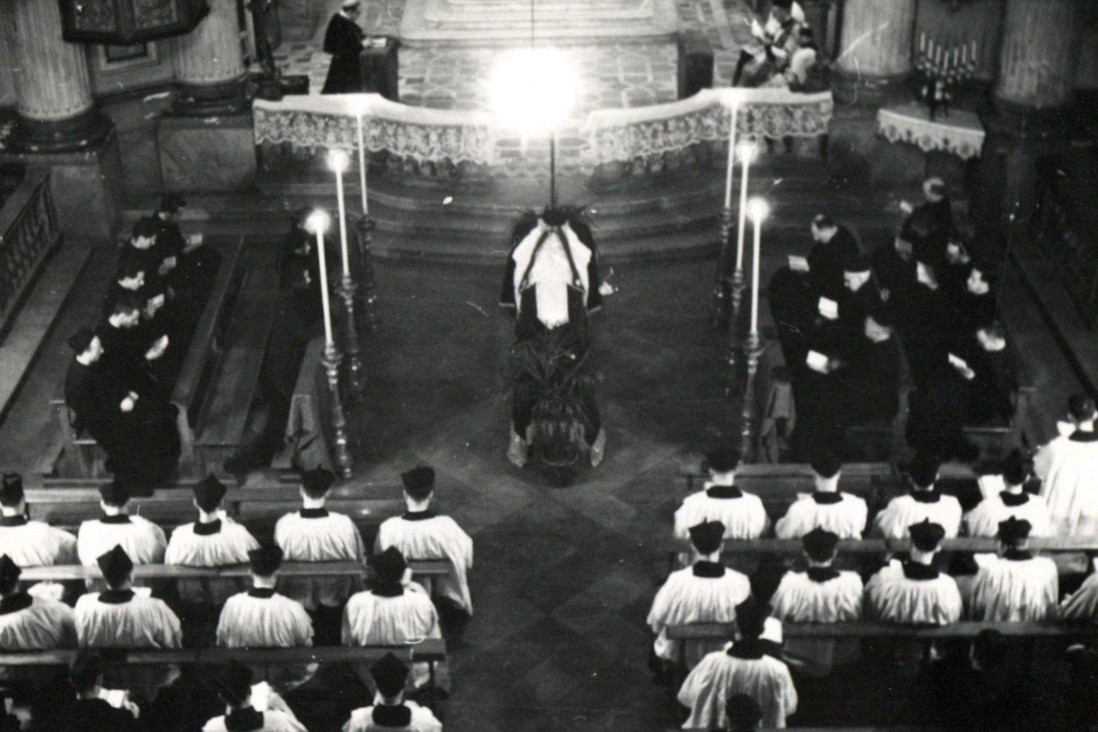
The fate of Jesuit remains has not always been the same since the Society was born. Some rest in crypts, some in ossuaries, some in cemeteries. Let us look at the historical reasons behind these differences.
The death of a Jesuit is a moment that unites the whole community in grief and sorrow for the brother, at the same time it involves a series of procedures.
The Fr Superior organises the funeral and arranges for the burial of the brother in one of the Society of Jesus graves in the city cemeteries.
In the photographs accompanying today’s in-depth study, the funeral of a Jesuit and the exit of the coffin from the church of St. Anthony in Chieri is immortalised.
It is the same procedure that has been followed for centuries, but with some differences that we can appreciate by taking a journey through time.
We have already seen, thanks to the diary of the sacristan of Castel Gandolfo [link to the mid-July column on the duties of the sacristan] that for the deceased a wake was organised and mourning vestments were prepared for the church, while today the funeral is more sober.

Jesuits deceased in Rome before 1870
We are in 1830, it is the evening of 27 January when, shortly after Ave Maria, Fr Paolo Invernizzi died in the Convitto di Nobili in Rome, which was in what is now the Borromeo Palace.
A letter written by the Rector to the Provincial recounts his death. The Jesuit had fallen ill nine days earlier: a fever initially thought to be rheumatic before being diagnosed as scarlet fever. Within nine days, the most eminent doctors in the city were contacted, but all efforts were in vain and the Jesuit died.
Immediately after writing to his major superior, the Rector took paper and ink again and turned to another correspondent: Bishop Della Porta, Vicegerent of Rome.
The request was for permission to transport the corpse, at night, to the nearby church of St Ignatius to give him burial, according to “the custom of the Company before it was suppressed”.
Burial already took place regularly for all Jesuits who died at the Roman College and who had “jurisdiction” for burial at St Ignatius.
The Convitto dei Nobili, although only a few metres away, did not share the church’s space for burials. The Rector therefore appealed to an ancient custom dating back to previous centuries, therefore practised until 1773, which provided for the possibility of burying in St Ignatius also the fathers of the Convitto community, who otherwise would have been destined for the crypts of neighbouring churches. Permission was duly granted.
Why did we need to mention the case of Fr Invernizzi’s body? Because for all Jesuits who died in Rome from the end of 1870 onwards it was no longer possible to have burial in a church, except for specific cases and with a very different procedure from that followed by the Rector of the Convitto dei Nobili in 1830.
Jesuits deceased in Rome after 1870
With the annexation of Rome to the Kingdom of Italy, the rules, of Napoleonic inspiration and already in force in the rest of Italy since 1861, came into force for the burial of the dead. Churches, crypts and ossuaries were no longer the preferred burial places, but cemeteries, located outside the city walls for reasons of health and hygiene.
The construction of the Verano Monumental Cemetery dates back to the early years of Rome, capital of the Kingdom of Italy, where, from 1875 onwards when the Compagnia’s chapel was completed, deceased Jesuits in Rome are laid to rest.
Only in the case of eminent ecclesiastical personalities or Blesseds and Saints is burial in the church carried out today, requiring specific authorisations.
Crypts
One might therefore think that Fr Invernizzi still rests in the crypt in cornu Evangelii – a Latin expression meaning on the left side, looking at the altar – of the church of St Ignatius in Rome.
In fact, from a census carried out by studying the lapidary epigraphs, his name does not appear, nor do those of all the brethren who died from the construction of the church until around 1840. The reason for this is very simple: crypts are not exterminated places where all the remains of Jesuits who died during the first centuries of the Society’s life could be found.
Periodically, it was necessary to remove the remains of those who had been buried for a few years, five to fifteen years, the time needed to be able to cut down the bones and then move the Jesuit remains to the ossuary.
The ossuary is therefore the final resting place for hundreds of Jesuits, those still in the crypt will remain there forever.
Since September 1870, in fact, the crypts of many churches have remained intact, unless conservation reasons have arisen.
Scattered bones
Of course, not all crypts and ossuaries have come down to us intact.
In the town of Tivoli, for example, the Society of Jesus had a boarding school for noblemen, which closed with the end of the Papal State. Until 1870, the deceased fathers were buried in the Gesù church, not far from the boarding school. During the Second World War, the church was bombed and among the debris were the bones of the fathers buried in the crypt. These were taken to the town cemetery and placed in the communal ossuary.
An even sadder fate is that of the bones of the many Jesuits who died in Albania, which were scattered because of the war first and the communist regime later.
This story is also shared by the crypts of so many churches in missions and provinces in Asia and Africa where entire sacred buildings no longer exist.
Maria Macchi



